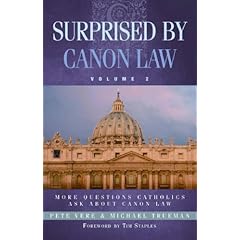My archbishop doesn't seem to realize how much interest there is in the old Mass. He writes:
From Cleveland I flew to Rome at the request of Cardinal Tarcisio Bertone to participate in a meeting discussing the Holy Father’s Moto Proprio about the use of the older form of the Latin Mass. There were about 25 bishops there, including the president of Ecclesia Dei Cardinal Darío Castrillón Hoyos, the prefect of Divine Worship and the Discipline of the Sacraments Cardinal Francis Arinze, several heads of bishops’ conferences as well as some cardinals and other residential bishops.
They shared with us the Moto Proprio and the Holy Father’s letter explaining it. We also had an opportunity to read the Latin document. We each commented on that, and then the Holy Father came in and shared some of his thoughts with us. The Holy Father is obviously most concerned about trying to bring about reconciliation in the Church. There are about 600,000 Catholics who are participating in the liturgies of the Society of St. Pius X, along with about 400 priest.
The Holy Father was very clear that the ordinary form of celebrating the Mass will be the new rite, the Norvus Ordo. But by making the Latin Mass more available, the Holy Father is hoping to convince those disaffected Catholics that it is time for them to return to full union with the Catholic Church.
So the Holy Father’s motivation for this decision is pastoral. He does not want this to be seen as establishing two different Roman Rites, but rather one Roman Rite celebrated with different forms. The Moto Propio is his latest attempt at reconciliation.
In my comments at the meeting I told my brother bishops that in the United States the number of people who participate in the Latin Mass even with permission is very low. Additionally, according to the research that I did, there are only 18 priories of the Society of St. Pius X in the entire country. Therefore this document will not result in a great deal of change for the Catholics in the U.S. Indeed, interest in the Latin Mass is particularly low here in New England.
In our archdiocese, the permission to celebrate the Latin Mass has been in place for several years, and I granted permission when I was in Fall River for a Mass down on the Cape. The archdiocesan Mass is now at Immaculate Mary of Lourdes Parish in Newton. It is well attended, and if the need arises for an extension of that we would, of course, address it.
This issue of the Latin Mass is not urgent for our country, however I think they wanted us to be part of the conversation so that we would be able to understand what the situation is in countries where the numbers are very significant. For example, in Brazil there is an entire diocese of 30,000 people that has already been reconciled to the Church.
I think I know what's leading the Cardinal to underrate the issue's importance for the US: he's thinking only of the Motu Proprio's effect for Catholics who worship at SSPX Masses.
In France and Germany, they're substantial, visible communities, a large segment of the active Catholic population. In France, some parish churches have even been placed under SSPX control by direct action of the laity with the cooperation of local officials.
So the Cardinal counts 18 SSPX priories in the US and figures that's how big the movement is. But SSPX priests serve multiple locations -- 105 of them; and there are other groups as well: splinter groups from the SSPX, smaller movements, and also individual priests with independent chapels. All told, there are over 300 unapproved Mass sites: a lot more than 18. The unauthorized traditionalist groups are just more diverse and more dispersed.
But the Motu Proprio is aimed at benefiting all the faithful, not just those who have opted for the illicit chapels. It should improve the celebration of the Roman rite Mass in general, if the clergy and the musicians who shape its celebration can develop in it the values to which the old rite bears witness.
My response to the Cardinal follows after the jump.


